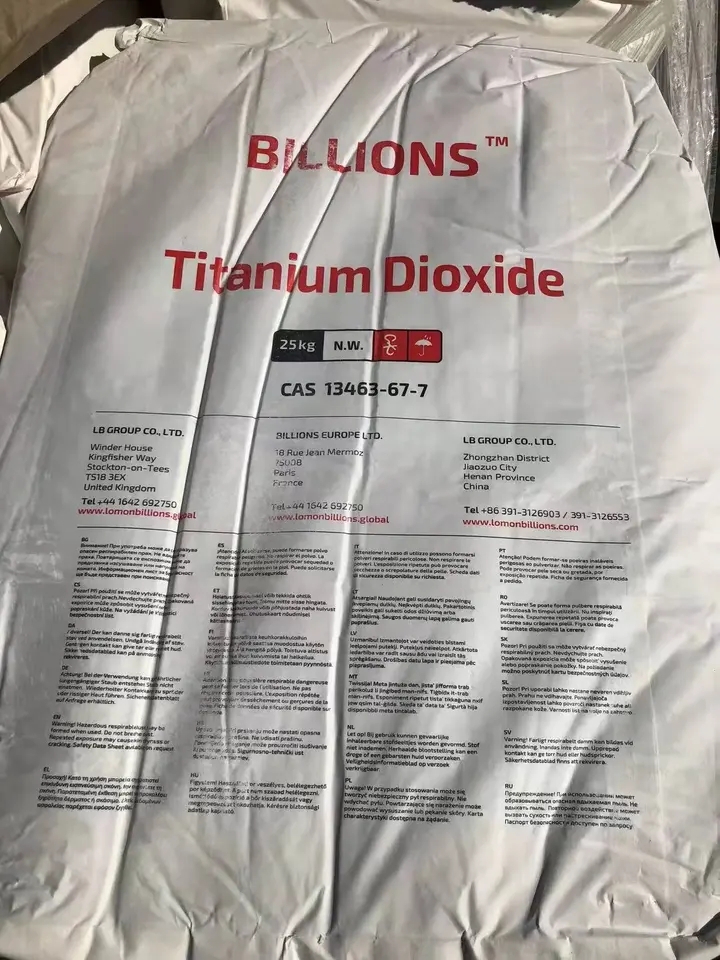
8 月 . 12, 2024 22:06 Back to list
Anatase Price Suppliers and Market Trends for Titanium Dioxide and Related Products
The Pricing and Suppliers of Anatase Titanium Dioxide
Anatase titanium dioxide (TiO₂) is one of the two common polymorphs of titanium dioxide, the other being rutile. Anatase has garnered much attention due to its unique photocatalytic properties, making it essential in various applications, such as in photocatalysts, pigments, and even in solar energy conversion. The pricing and availability of anatase from suppliers have become significant factors for industries that rely on this versatile material.
Understanding Anatase Titanium Dioxide
Anatase differs from its rutile counterpart in terms of crystal structure and electron mobility. These differences contribute to its effectiveness in photocatalytic applications. Because of its high surface area and reactivity, anatase is widely used in environmental applications, such as air purification and water treatment, where it can break down pollutants under UV light. Additionally, its strong UV absorption properties make it an ideal ingredient in sunscreens and other cosmetic products.
Market Dynamics and Pricing
The price of anatase titanium dioxide can vary significantly based on several factors. These include the purity of the material, production methods used, geographical location of suppliers, and global demand and supply dynamics. Typically, the price for high-quality anatase can range from $3,000 to $5,000 per ton, though this can fluctuate based on market conditions.
In recent years, there has been a growing demand for environmentally friendly and sustainable products, which has, in turn, influenced the demand for anatase titanium dioxide. Industries are increasingly recognizing the value of using anatase in green technologies, leading to a broader acceptance in sectors such as coatings, construction, and even food safety.
Key Suppliers in the Market
anatase price suppliers

Several key players dominate the anatase titanium dioxide market. Some of the notable suppliers include established chemical manufacturers and specialized nanomaterials companies. Companies such as Huntsman Corporation, Tronox Holdings, and Cristal Global are prominent in titanium dioxide production. Each supplier may offer different grades of anatase, tailored for various applications, ensuring that customers have options based on their specific needs.
In addition to large manufacturers, there are also smaller companies and regional suppliers who focus on niche markets or specialized applications. These suppliers often offer competitive pricing and may provide customized solutions to meet unique customer requirements.
Challenges in the Supply Chain
The supply chain for anatase titanium dioxide faces several challenges, including fluctuating raw material costs, environmental regulations, and geopolitical issues that can disrupt production. For instance, the primary raw materials for producing titanium dioxide come from mining operations that can be impacted by environmental policies, labor disputes, or mining regulations. As a result, suppliers must navigate these challenges to maintain stable pricing and ensure a consistent supply for their customers.
The global shift toward sustainability is also prompting suppliers to invest in more eco-friendly production methods. This transition may lead to higher initial costs but can provide long-term benefits in terms of market positioning and compliance with stricter regulations.
Conclusion
In summary, anatase titanium dioxide is a valuable material with a rich spectrum of applications, and its market dynamics are influenced by a variety of factors including purity, supplier location, and global demand. As industries continue to prioritize sustainable practices, suppliers of anatase are likely to adapt by refining their production methods and exploring new markets. As a result, customers searching for athletic-grade anatase should closely monitor not only pricing but also the reputation and sustainability practices of their suppliers to ensure they make informed purchasing decisions.
-
Lithopone for Plastic & TiO2 R-5568/SK-6658 Masterbatch Solutions
NewsMay.30,2025
-
China Leading Rutile TiO2 Manufacturer - R5566 & R996 Grades Available
NewsMay.30,2025
-
High-Purity Anatase & Rutile TiO2 Powder Trusted Manufacturer
NewsMay.30,2025
-
High-Purity Anatase Products Trusted Supplier & Manufacturer
NewsMay.29,2025
-
Best Price Eco-Friendly Rutile TiO2 Supplier & Wholesale Factory
NewsMay.29,2025
-
Chinese Anatase Titanium Dioxide for Ceramic Glaze Reliable Supplier
NewsMay.29,2025
